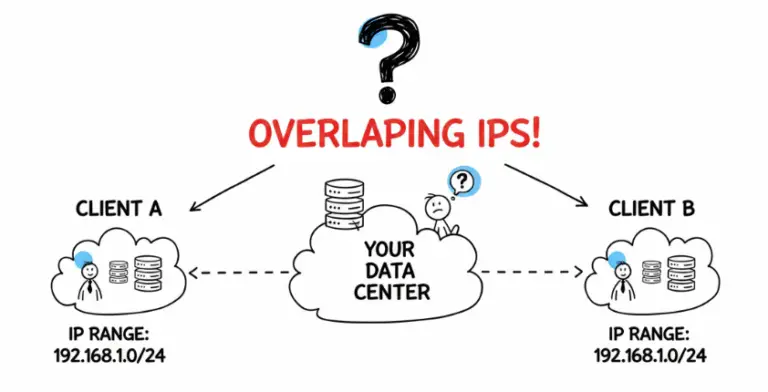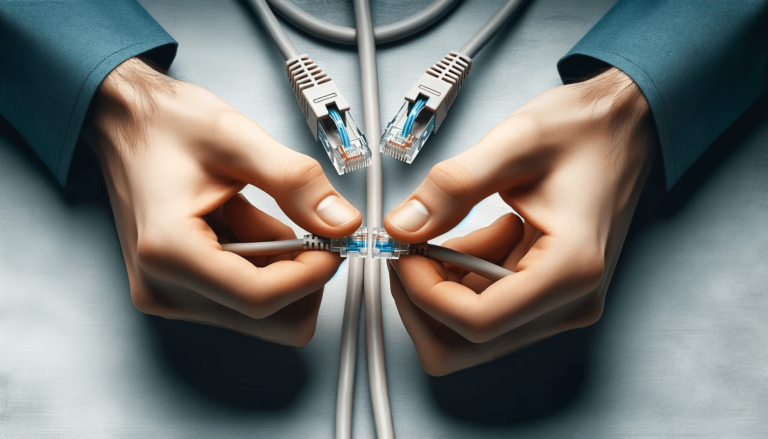Before we dive into what Cisco vPC (virtual Port Channel) is, let’s start with the basics. A standard port channel is a long-standing technology that bundles multiple physical interfaces into a single logical link. This provides excellent benefits like increased bandwidth, load balancing, and redundancy. However, it has one major limitation: all links in the bundle must terminate on the same physical switch. If that single device fails, you lose all connectivity.
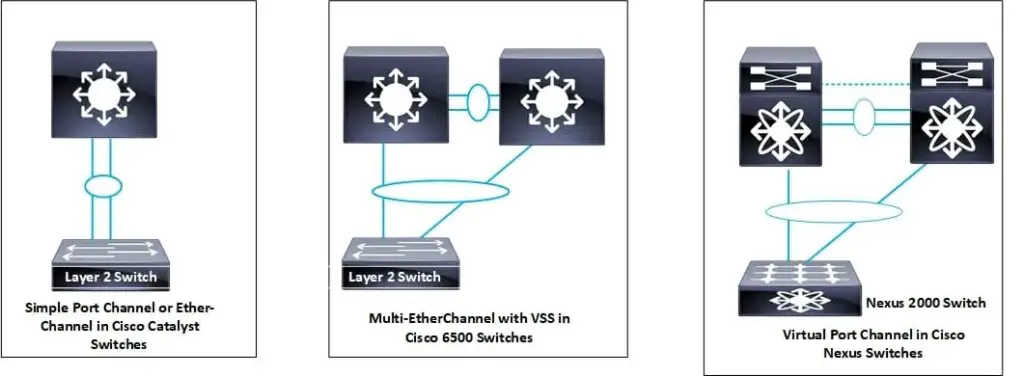
To overcome this single point of failure, Cisco introduced technology to allow a port channel to span across two different physical switches. The first iteration of this was the Virtual Switching System (VSS) on the classic Catalyst 6500 series. VSS merged two switches into a single logical entity, sharing one control and management plane. This was a game-changer for network resiliency.
In 2009, Cisco evolved this concept with the launch of vPC for its Nexus series of data center switches. While the goal is similar to VSS, the architecture is fundamentally different. With vPC, each Nexus switch maintains its own independent control plane. They are managed as two separate devices but work together to present a single logical port channel to a downstream device. This dual control plane design is a key differentiator, offering robust high availability without the complexities of a merged chassis system.
Today, the modern equivalent to VSS on the Catalyst 9000 series platform is Cisco StackWise Virtual, which also uses a single control plane architecture, distinguishing it from the dual control plane approach of vPC on Nexus switches.
In simple terms, vPC enables a server, switch, or any other device to create a port channel that connects to two separate upstream Nexus switches. This allows for the creation of Layer 2 multipathing, which provides excellent redundancy and doubles the usable bandwidth by eliminating links blocked by Spanning Tree Protocol (STP).
Cisco vPC Benefits
The advantages of implementing Cisco vPC in your data center are significant:
- Allows a single device to use a port channel across two upstream switches.
- Eliminates Spanning Tree Protocol (STP) blocked ports.
- Provides a loop-free topology.
- Uses all available uplink bandwidth.
- Provides fast convergence if a link or an entire device fails.
- Delivers excellent link-level and device-level resiliency.
- Ensures high availability for connected devices.
Key vPC Terminology
Understanding the components of a vPC architecture is key to a successful deployment.
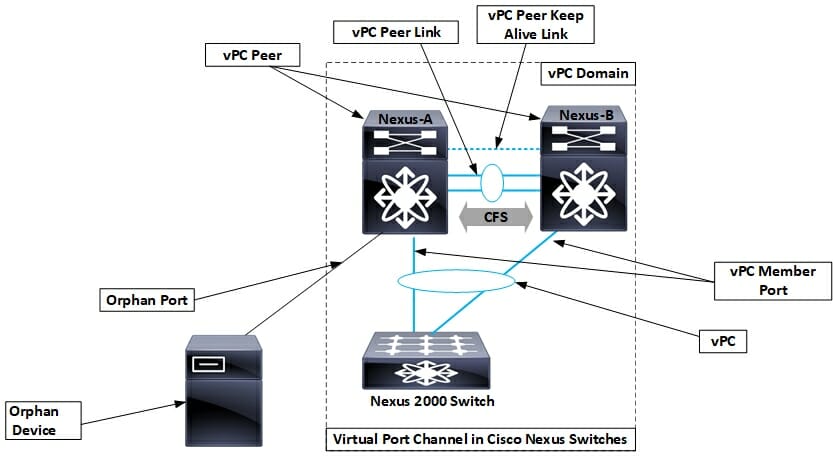
- vPC Domain: This is a logical grouping of the two vPC peer switches, the vPC peer link, and all the vPC port channels connected to downstream devices. A unique domain ID is required for each vPC domain on a campus.
- vPC Peer Switch: One of the two Cisco Nexus switches connected by the peer link. One switch will be elected as the primary and the other as the secondary.
- vPC Peer Link: This is the most critical component. It is a dedicated link (typically a port channel of 10G, 40G, or 100G links) used to synchronize state information, carry control plane traffic, and transport multicast/broadcast/unknown unicast data between the two peer switches.
- vPC Peer Keepalive Link: This is a separate link that provides a heartbeat between the two peer switches. It is used as a secondary check to determine if the peer is truly down or if only the peer link has failed, which helps prevent split-brain scenarios.
- vPC Member Port: An interface on a peer switch that belongs to a vPC port channel.
- Orphan Port: An interface on a vPC peer switch that is connected to a single-homed device (not part of a vPC).
Cisco vPC Requirements
- vPC is a foundational feature supported on all modern Cisco Nexus switch platforms and has been available for over a decade. It is included in the base NX-OS software license.
- You must use switches from the same Nexus family (e.g., Nexus 9000 with Nexus 9000) for a vPC peer relationship.
How to Configure Cisco vPC
Configuring vPC is straightforward if you follow the correct order of operations. The following steps will guide you through the process.
Please note: The order of these steps is important.
- Enable necessary features.
- Create the vPC domain.
- Configure the vPC Peer Keepalive link.
- Create the vPC Peer Link.
- Create vPC member ports.
- Verify configuration consistency.
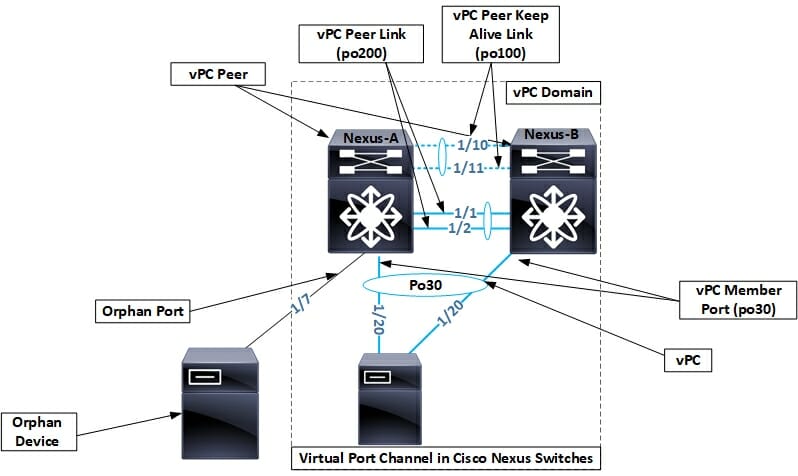
Step 1: Enable Features
You must enable the vpc and lacp features on both Nexus switches.
Nexus-A and B
feature vpc feature lacp
Step 2: Create the vPC Domain
Define the vPC domain with a unique ID (1-1000). Set priorities for both switches; the switch with the lower priority value becomes the primary.
Nexus-A (Primary)
vpc domain 1 role priority 8192
Nexus-B (Secondary)
vpc domain 1 role priority 16384
Step 3: Configure the Peer Keepalive Link
It is best practice to use a dedicated VRF and a back-to-back physical connection for the keepalive link. Here, we’ll use a management port or a routed port for this purpose.
Nexus-A
vrf context VPC_PKAL interface mgmt0 vrf member VPC_PKAL ip address 10.1.1.1/30 vpc domain 1 peer-keepalive destination 10.1.1.2 source 10.1.1.1 vrf VPC_PKAL
Nexus-B
vrf context VPC_PKAL interface mgmt0 vrf member VPC_PKAL ip address 10.1.1.2/30 vpc domain 1 peer-keepalive destination 10.1.1.1 source 10.1.1.2 vrf VPC_PKAL
Step 4: Create the vPC Peer Link
Create a port channel between the two switches and configure it as the vPC peer link. This should be a high-bandwidth link (or bundle of links).
Nexus-A & B
interface Ethernet1/1-2 description vPC Peerlink Member channel-group 200 mode active interface port-channel200 description vPC Peerlink switchport mode trunk vpc peer-link
Step 5: Create vPC Member Ports
Finally, configure the downstream-facing interfaces. The port channel number and the VPC ID must match on both peer switches.
Nexus-A & B
interface Ethernet1/20 description Link to Server-1 channel-group 30 mode active interface port-channel30 vpc 30
The last step is to configure a standard LACP port channel on the downstream device (e.g., your server).
Step 6: Verify Configuration Consistency
Use the following command to check for any configuration mismatches between the peer switches for a specific vPC.
Nexus-A & B
show vpc consistency-parameters vpc 30
Important Commands to Verify and Troubleshoot vPC
Once configured, you’ll need a few key commands to verify the health of your vPC domain.
show vpc brief
This is your primary command for a high-level overview. Look for ‘peer adjacency formed ok’ for the Peer status and ‘peer is alive’ for the keep-alive status. You also want to see ‘success’ for the consistency status.
Example Output
Nexus-B# show vpc brief Legend: (*) - local vPC is down, forwarding via vPC peer-link vPC domain id : 1 Peer status : peer adjacency formed ok vPC keep-alive status : peer is alive Configuration consistency status: success Per-vlan consistency status : success Type-2 consistency status : success vPC role : secondary Number of vPCs configured : 1 Peer Gateway : Enabled Dual-active excluded VLANs : - Graceful Consistency Check : Enabled Auto-recovery status : Enabled (timeout = 240 seconds) vPC Peer-link status --------------------------------------------------------------------- id Port Status Active vlans -- ---- ------ --------------------------------------------------- 1 Po200 up 1,2,5,10 vPC status ---------------------------------------------------------------------------- id Port Status Consistency Reason Active vlans -- ---- -------- ----------- -------------------------- ----------- 30 Po30 up success success 10
show vpc orphan-ports
This command is useful for identifying any ports connected to single-homed devices. It’s important to know where these ports are, as they can lose connectivity if their local vPC peer switch goes down.
Example Output
Nexus-A# show vpc orphan-ports Note: --------::Going through port database. Please be patient.::-------- VLAN Orphan Ports ------- ------------------------- 900 Eth1/7
show vpc consistency-parameters
This command provides a detailed check of all Type 1 (critical) and Type 2 (non-critical) parameters. Any mismatch in Type 1 parameters will cause the vPC on the secondary peer to be suspended to prevent network instability.
Example Output
Nexus-A# show vpc consistency-parameters vpc 30
Legend:
Type 1 : vPC will be suspended in case of mismatch
Name Type Local Value Peer Value
------------- ---- ---------------------- -------------------
STP Port Type 1 Default Default
STP Port Guard 1 Default Default
STP MST Simulate PVST 1 Default Default
lag-id 1 [(7f9b, [(7f9b,
0-23-4-ee-be-69, 801e, 0-23-4-ee-be-69, 801e,
0, 0), (8000, 0, 0), (8000,
0-23-4-ee-be-5, 2, 0-23-4-ee-be-5, 2,
0, 0)] 0, 0)]
mode 1 active active
Speed 1 10 Gb/s 10 Gb/s
Duplex 1 full full
Port Mode 1 trunk trunk
Native Vlan 1 1 1
MTU 1 1500 1500
Allowed VLANs - 1-100 1-100
Local suspended VLANs - - -
show vpc peer-keepalive
Finally, to check the detailed status of the keepalive link, use the `show vpc peer-keepalive` command. This will show you source/destination IPs, timers, and message statistics.
Example Output
Nexus-B# show vpc peer-keepalive vPC keep-alive status : peer is alive --Peer is alive for : (2900862) seconds, (249) msec --Send status : Success --Receive status : Success --Last update from peer : (0) seconds, (192) msec vPC Keep-alive parameters --Destination : 10.1.1.1 --Keepalive interval : 1000 msec --Keepalive timeout : 5 seconds --Keepalive hold timeout : 3 seconds --Keepalive vrf : VPC_PKAL --Keepalive udp port : 3200 --Keepalive tos : 192
Cisco vPC Best Practices
Use the below table as a guideline when configuring and deploying vPC in your network.
| Component | Recommendation | Reason |
|---|---|---|
| vPC Peer Keepalive | Use the management interface (mgmt0) or a dedicated routed link. Run it in a separate VRF. | Isolates keepalive traffic from the data plane and ensures it is not affected by data plane issues. |
| vPC Peer Link | Use at least two 10G or faster ports in a port channel from different line cards if possible. | Provides high bandwidth for state sync and failure traffic, and protects against line card failure. |
| vPC Domain ID | Ensure the vPC domain ID is unique within your Layer 2 network. | Prevents conflicts and unpredictable behavior if multiple vPC domains exist on the same network. |
| STP Priority | Set the vPC primary peer as the spanning-tree root for all VLANs. | Ensures predictable traffic paths and optimal forwarding. |
| Orphan Ports | Be aware of singly-homed devices and ensure they are connected to the primary vPC peer if possible. | Minimizes downtime for orphan devices in the event the secondary peer switch fails. |
Modern Applications: vPC in a VXLAN EVPN Fabric
While vPC is a Layer 2 technology, it remains highly relevant in modern data center fabrics based on VXLAN EVPN. In a typical leaf-spine architecture, servers or other devices at the edge of the network often require redundant connections.
vPC is the standard method for providing device-level redundancy at the leaf layer. Two leaf switches are configured as a vPC pair, and they act as a single logical VTEP (VXLAN Tunnel Endpoint) for the fabric. This allows servers to be dual-homed to the fabric using a standard LACP port channel, providing active-active forwarding and high availability without adding complexity to the server configuration.
Acronyms Used in This Post
- vPC: Virtual Port-Channel
- VSS: Virtual Switch System
- STP: Spanning Tree Protocol
- VXLAN: Virtual Extensible LAN
- EVPN: Ethernet VPN
- VTEP: VXLAN Tunnel Endpoint
Conclusion
In this article, we covered the history and architecture of Cisco vPC, its key benefits, and the components that make it work. We walked through a detailed configuration example for the Nexus 9000 platform and highlighted the most important commands for verification and troubleshooting. By following these steps and best practices, you can build a highly resilient and efficient data center network. I hope you found this guide helpful; please feel free to share it and subscribe for more networking tips and news.
Frequently Asked Questions About Cisco vPC
What is a vPC orphan port?
A vPC orphan port is an interface on a vPC peer switch that is connected to a single-homed device (a device not using a port channel across both switches). If the switch hosting the orphan port fails, that device will lose connectivity. It’s a key consideration for migration and design.
What happens if the vPC peer-link fails?
If the peer-link fails but the peer keepalive link is still up, a split-brain scenario is detected. The secondary vPC peer switch will suspend all its vPC member ports to prevent network loops and forwarding issues. The primary peer remains active, ensuring traffic continues to flow through its links.
Can I use vPC with non-Cisco switches?
The vPC feature itself is Cisco proprietary and only runs between two Cisco Nexus switches. However, the downstream device connected to the vPC domain can be any device that supports standard IEEE 802.3ad LACP (Link Aggregation Control Protocol). This includes servers, firewalls, load balancers, and switches from other vendors.
- MikroTik CRS305-1G-4S+ Review: The Ultimate Budget SFP+ Switch Guide - December 25, 2025
- 10 Best Network Switches for Home Networks in 2026 (Top Picks) - December 24, 2025
- 7 Best Budget Routers For Small Business Networks (Under $200) - December 22, 2025

